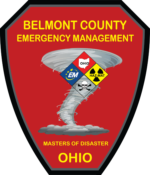Emergency Operations Center
The Emergency Operations Center (EOC) serves a critical role in every phase of emergency management, from being the hub for all coordination during an incident to facilitating and directing recovery/clean-up. However, the EOC does not manage an incident — it coordinates.
Various situations will trigger the EOC’s opening, including emergencies that require resources beyond what local capabilities can handle; lengthy crisis situations; when major policy decisions will or might be needed; when a local or state emergency is declared; and when the EOC’s activation will be advantageous to successful management of an incident.
The EOC is the centralized location of emergency response and recovery support operations during incidents. While tactical on-scene operations are conducted from the ICP, the EOC supports and helps coordinate ICP operations and any other adjacent incident operations. The common functions of EOCs is to collect, gather and analyze data; make decisions that protect life and property, maintain continuity of the organization, within the scope of applicable laws; and disseminate those decisions to all concerned agencies and individuals.
An EOC may be a temporary facility or may be located in a more central or permanently established facility, perhaps at a higher level of organization within a jurisdiction. EOCs may be organized by major functional disciplines (e.g., fire, law enforcement, medical services), by jurisdiction (e.g., Federal, State, regional, tribal, city, county), or by some combination thereof.
EOC Activation Levels
Level III: Monitoring & Assessment
Level III is typically a monitoring and assessment phase where a specific threat, unusual event, or situation, is actively monitored by the EOC. A Level III activation is an internal process and involves little, if any, inter-agency direction or coordination.
The threat, unusual event, or situation simply warrants observation, verification of appropriate action, and follow-up by staff. Events or incidents that occur during Level III activation can generally be resolved in a brief period of time by using a very small number of resources.
Level III activation does not require significant alterations of its day-to-day operations or management structure.
Upon notification of the existence of a threat, unusual event, or situation, the Duty Officer evaluates the situation, and, if conditions warrant, notifies the Director or designee. Appropriate agencies are alerted, advised of the situation, and instructed to take appropriate action as part of their everyday responsibilities.
At the conclusion of the event, the Duty Officer verifies completion of the actions taken and documents the incident.
At times, it is appropriate to hold briefings or staff meetings to respond to, or mitigate the situation, but no Incident Action Plan (IAP) is developed and distributed. Other coordinators may become involved but the Duty Officer will remain the primary point of contact.
Level II: Partial Activation
Level II partial activation is typically limited agency activation. Staff and agency Liaisons with a role in the incident response are activated and required to report to the EOC. All other Liaisons are alerted of the event and are on standby.
The purpose of Level II activation is to initiate preparations due to a significant threat of a disaster or to coordinate response due to the occurrence of a minor disaster. During Level II activation, the EOC may be operational 24 hours a day.
During Level II activation, the EOC disseminates information, and begins to coordinate preparation and response actions with, external agencies, Municipal Branch Representatives, and Belmont County departments tasked in emergency response.
The incident command system is implemented and the five sections along with the branches are activated.
The EOC Command Staff develops and implements an Incident Action Plan (IAP). The IAP is the work plan for everyone, including the Mayor, Manager and their staff. The EOC personnel are briefed on the IAP and pertinent items are posted on the EOC status boards.
In most cases, the Mission Tracking & Message Control Center, Geographic Information Systems (GIS) services, and the Public Information Officer are activated. Depending upon the event, any appropriate logistical support elements such as security, food unit, etc. are also activated.
Level I: Full Activation
In a full-scale activation, the EOC is activated on a 24-hour schedule due to an imminent threat or occurrence of a disaster. All staff and all Liaisons are activated and required to report to the EOC. Municipal Branch Representatives are also in place in the EOC.
The ICS is implemented and all sections and branches are activated. As in Level II activation, the IAP establishes the operational objectives and priorities of the incident. Additionally, all logistical support elements are activated.
At this level response, relief, and recovery operations are expected to last for an extended period of time.
Additional support or back-up staff, including representatives from other County EMA’s along with Ohio EMA, is notified and available to assist should the response escalate and exceed local capability.
